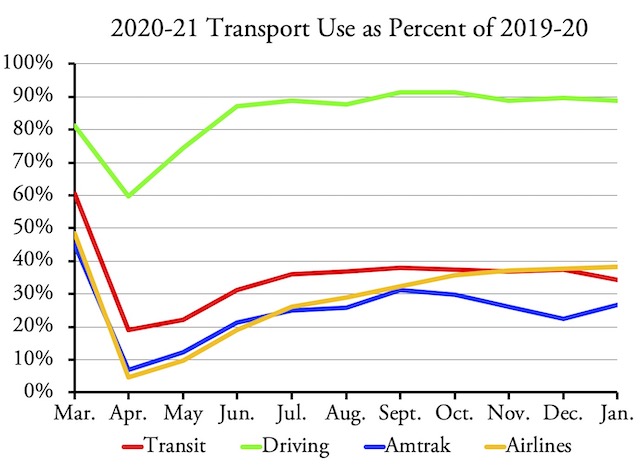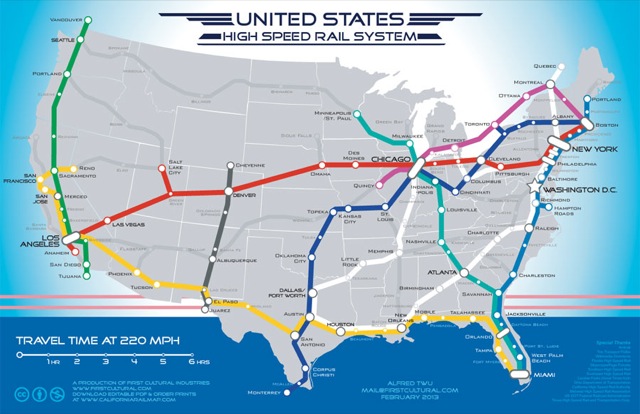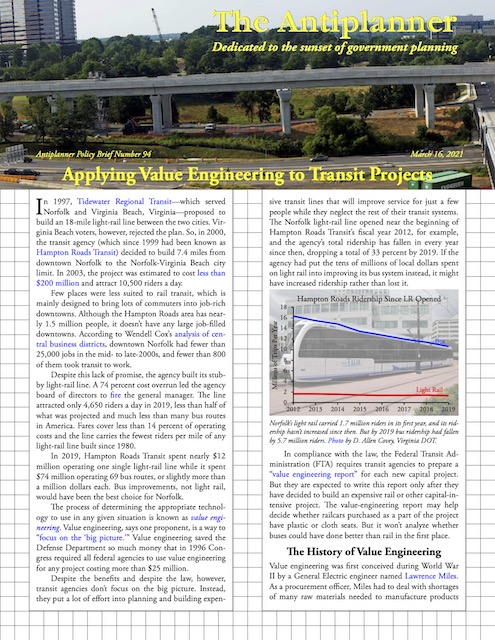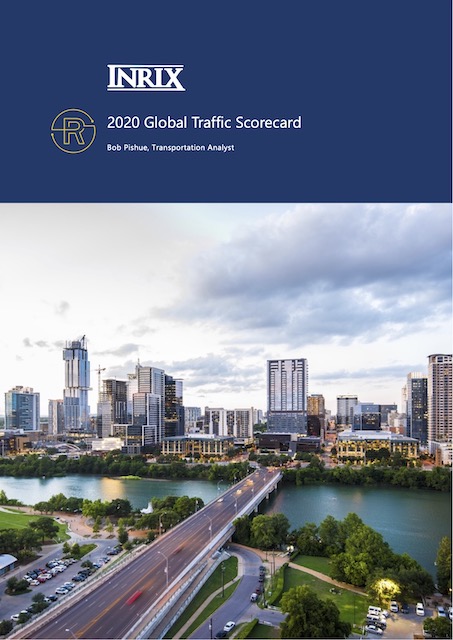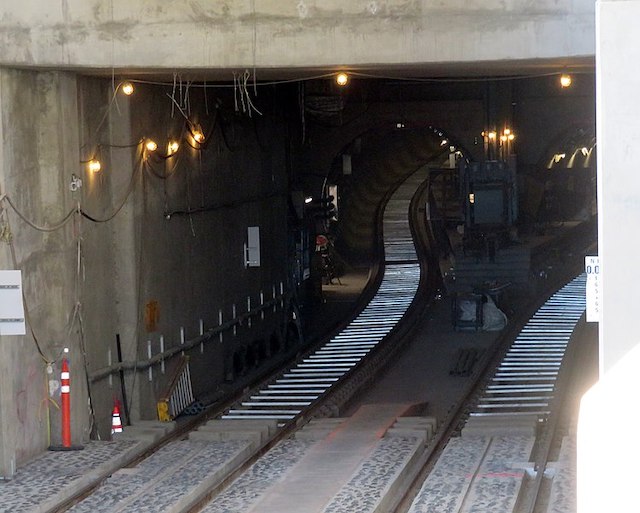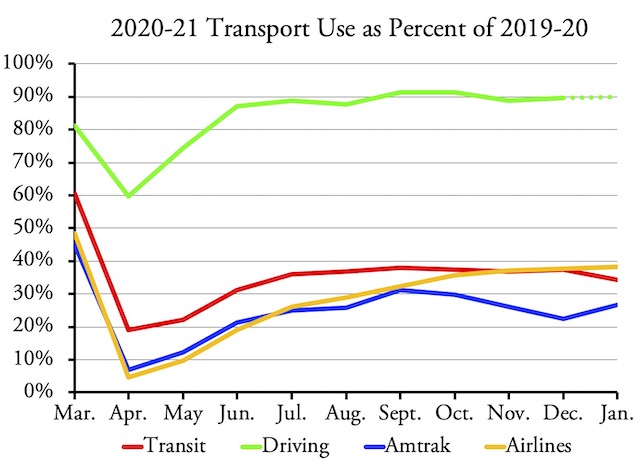Americans drove 88.7 percent as many miles in January 2021 as in the same month of 2020, according to data released yesterday by the Federal Highway Administration. That’s down slightly from 89.7 percent in December.
Looking at the above chart, it is amazing how stable everything has become. Driving has hovered within 2 percentage points of 89 percent since June. Transit has hovered within 2 percentage points of 36 percent since July. Flying has hovered within 4 percentage points of 36 percent since September. With the exception of September when it reached 31 percent, Amtrak has hovered within 4 percentage points of 26 percent since June. Continue reading

